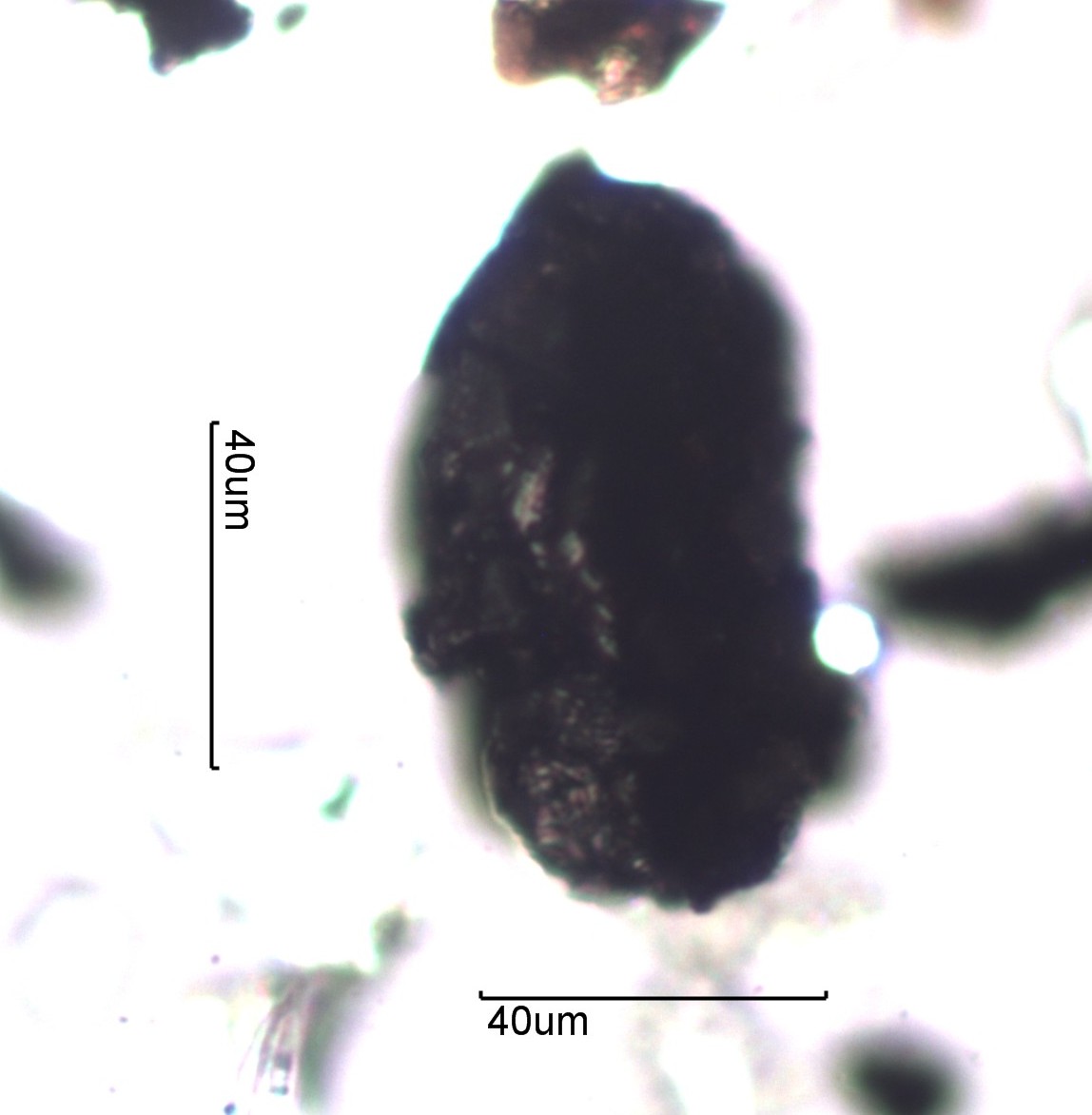Cenosphere From Bunker C Fired Boiler
This is a cenosphere collected by tapelift from a surface
near a major fishing terminal. This
large irregular cenosphere is typical of the cenospheres from very viscose fuels,
such as Bunker C.
Transmitted Off Circular Polarized Light and Reflected Darkfield Illumination
Definition/Function:
Cenospheres are created by the incomplete combustion of a liquid fuel. In the process of
combustion hydrogen is oxidized
preferentially, followed by the carbon. If insufficient oxygen is available then
residual carbon is left behind. The form
taken by the carbon is dependent upon the form of the fuel, its residence time in the
combustion zone, how soon the oxygen
was depleted in the combustion process. The result is a carbon shell with holes where
the vapors created by the heat
continue to escape. With fuels of low viscosity the cenospheres take on a spherical
shape. When the fuel is very viscose
the cenospheres can take very irregular shapes. The burning of Bunker C fuel or the
burning of tar or asphalt often create
very unusual shaped cenospheres. The introduction of liquid droplets of fuel into the
combustion zone occurs
routinely in diesel engines, jet engines, oil furnaces, and oil-fired boilers. It also
occurs in the bubbling of viscose
melts, such as tar, asphalt, and themoplastics during uncontrolled fires. The liquid
fuel may be a liquid at room
temperature; such as kerosene, diesel fuel, or oil; or it may be from the melt; such as
is the case in the combustion of
any thermoplastic or wax.
Significance in the Environment:
Cenospheres always indicate a liquid droplet fuel. Diesel engines burn droplets of fuel
sprayed
into the combustion chamber. These droplets tend to be small and so most of the
cenospheres from
diesel truck engines are small. Large liquid fueled boilers, such as power plants, ship
boilers,
etc. introduce much larger droplets into the combustion chamber and produce larger
cenospheres.
Fuels, like Bunker C, are very viscose and produce irregular shaped droplets as they are
sprayed
into the combustion zone of a boiler and irregular shaped large cenospheres are the
result. These
are most commonly seen in the air around large harbors. Thermoplastics melt at the high
temperatures
of uncontrolled fires and begin to bubble as gases produced by pyrolysis vent from the
plastic. When
the bubbles burst they create droplets of airborne fuel that forms cenospheres.
Cenospheres from
uncontrolled fires often carry a large "tarry" component of partially pyrolized fuel.
Wood, coke,
coal, thermoset resins, etc. will not produce cenospheres directly.
Characteristic Features:
A porous surface is a characteristic of most cenospheres and that helps distinguish them
from magnetite spheres that are
also black but are smooth and lack the pores. Magnetite spheres also rotate the
polarization of the transmitted beam of
light and so are bright at the edge when viewed with transmitted cross polarized light.
Cenospheres do not have bright edges
when viewed with transmitted cross polarized light.
Associated Particles:
References:
1. http://en.wikipedia.org/wiki/Cenosphere (see Fuel or Oil Cenospheres heading)


